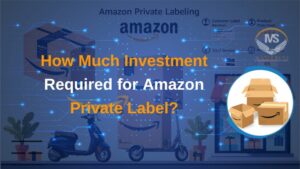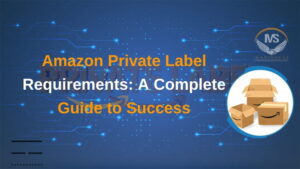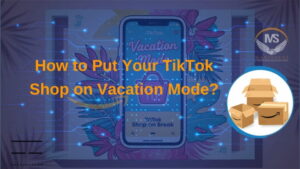How to find Amazon wholesalers and suppliers for your business
Ever dreamt of building a thriving Amazon business but overwhelmed by finding reliable suppliers? You’re not alone. Sourcing high-quality products is crucial for success on Amazon, but navigating the world of amazon wholesalers and suppliers can be tricky. This guide will be your roadmap to success! We’ll explore effective strategies to find reputable Amazon wholesale agencies and trusted Amazon consulting agencies to empower your entrepreneurial journey. Let’s unlock the secrets to building a strong foundation for your Amazon business!
Discover how to effectively find items at wholesale prices and market them on Amazon.com
The wholesale market may be right for you if you wish to buy goods in large quantities to resale for a profit.
Purchasing goods in large quantities at a reduced cost from a wholesale source is known as wholesale sourcing. After that, the vendor can profitably repackage the goods and resell them to buyers.
Selecting the ideal wholesaler for your company may be a difficult task. This article will describe what wholesalers do, where to seek for them, and what to consider before placing your first order. We’ll also go over how to properly purchase goods in bulk and sell them on Amazon.com.
A wholesaler: what is it?
A wholesaler is a supplier that serves as a go-between for sellers and manufacturers. With a wholesale license, they can purchase goods in large quantities at a reduced cost from producers and resell them to entrepreneurs for a marginal profit. Generally speaking, a wholesaler does not sell goods directly to final consumers.
PIf you would rather have the freedom to choose the items your company sells than deal directly with manufacturers, you might prefer to work with a wholesaler. You don’t have to take care of product creation or acquire raw materials because wholesalers already have a selection of items for you to pick from.
Does the Amazon store allow for wholesale sales?
items from a third-party brand or items under your own label can be sold by independent sellers who list their products in Amazon’s shop. Expert vendors are able to list goods in large quantities. In order to gain access to additional tools and resources, some of which we’ll discuss in this piece, you may also sign up for Brand Registry. To get started, sign up for a Professional selling plan; further information is provided below.
There are five stages to finding and selling wholesale goods on the Amazon shop.
Products can be bought in bulk from distributors and sold straight to consumers through th Amazon shop. With this strategy, you may purchase goods at a discount and resell them for a larger retail price. You may maximize your possible profit margins by taking advantage of volume discounts and reduced per-unit expenses when you buy in greater numbers. Here’s how it can function and some helpful hints along the road.
- Choose the product you wish to sell.
- Locate and confirm suppliers.
- Keep track of your purchases and get permission.
- List the goods and determine the cost.
- Manage sales and take care of fulfillment.
1. Select the item you wish to sell.
Do you want to carry a large variety of things or concentrate on a certain niche? Looking through the catalogs of various wholesalers is one method to get an idea of what’s available. You mayalso go through Amazon’s top sellers or popular products to find ideas for new things.Additionally, you may find popular products and categories in the Amazon store by using the free Product Opportunity Explorer tool.
Before you may offer certain items and categories in the Amazon shop, you must have approval. Utilize Seller Central’s Compliance Reference site to determine which documentation are needed for which categories and goods.
Next, consider how many things you would want to order. The idea behind buying wholesale is to make enough purchases to take advantage of the bulk pricing without going overboard with inventory. Verify whether the wholesaler has a minimum order quantity requirement. Ask for samples, compare the price to the quality of the goods, and keep in mind that most of the numbers are probably adjustable.
2. Locate and verify distributors
After you’ve decided what you want to sell, look into supplier firms who provide those goods. Other strategies for networking with suppliers include attending trade exhibits, requesting recommendations, and becoming a member of trade associations.
A logistics management strategy, financial considerations, and product authenticity should all be taken into account when choosing a supplier.
Check for genuineness
It is your duty as an Amazon seller to market real goods. If you sell branded goods, you ought to get them straight from the company or from one of their wholesalers or direct distributors. If you’re buying items from a wholesaler, check the supplier’s business license and brand permission letter to confirm their affiliation with the brand. Additionally, you may determine a supplier’s credibility by looking at the following:
- Look for the locations of the supplier’s warehouse and office.
- Examine their ratings with the Better Business Bureau.
- Inquire about the supplier’s responsibility policy.
- Pay attention to your consumers. To find out about other people’s experiences with the
wholesaler, read reviews or speak with others.
Red flag complaints are those pertaining to subpar product quality or customer service.
When contacting suppliers, be prepared with your tax identification number and company license. Wholesalers must first validate this information before they may interact with you.
Think about the expenses and charges.
Examine the prices and charges of the wholesalers you choose to deal with. Inquire about:
- Minimum order amounts, or MOQ
- Price each unit
- Any additional costs, such as dues
Generally speaking, the more you order, the less each unit will cost. Recall that the objective is to avoid going over budget while yet spending enough to benefit fully from a wholesale discount. For instance, it may be a good idea to look for alternative offers if you wish to buy 50 products but the price discount is only available if you buy 200
Prioritize logistics
Have you given any thought to how to handle inventory and complete orders from customers? Prior to reaching out, confirm that you have sufficient inventory management systems in place and that you have enough room to store and arrange products, particularly during times of high sales.
Inquire with suppliers on the lead times they have with manufacturers for product shipment and receipt, as well as the speed at which orders will be fulfilled. Keep track of the shipments you expect and plan the delivery of orders to clients. Inquire about the wholesaler’s return policy as well.
3. Keep track of your purchases and get permission.
You will need a purchase invoice from a manufacturer or distributor, or a letter from the brand approving you to sell their items, if an item needs approval before you can sell it in the Amazon shop. When you offer the product on Amazon, you’ll be requested to send them this paperwork. To find out if a product needs permission, do the following actions to request approval if necessary:
- Click Inventory from the Seller Central main menu, then select Add Products.
- Use the product name, UPC, ISBN, ASIN, or any other identifier to find the product.
- You will be able to see Show limits next to the product if it needs approval. An overview of
the listing criteria may be obtained by selecting Show restrictions. - Click the “Apply to Sell” button to initiate the approval procedure if you see one.
4. Provide a product list and pricing range.
List items
Existing and new product listings are the two main categories.
- You are only matching offer details (price, quantity, etc.) with an already-existing product detail page in the Amazon store when you match an existing product listing. You are not actually giving product information.
- In order to establish a new product detail page, you must offer details and comprehensive product information when you create a new product listing.
- Additionally, there are two fundamental ways to add items to your Seller Central inventory: individually and in large quantities.
- Use the Add items tool to list items one at a time.
- You must utilize the Add Products via Upload function and generate a spreadsheet with the product details in order to list in bulk.
Decide on pricing
In order to sustain strong margins and expand your business, when you determine your pricing strategy, make sure your list prices account for your original buy costs, selling charges, and any other expenditures.
Let’s take an example where you buy cellphones in bulk from a wholesaler for $200 a unit. You choose to spend $20,000 on 100 cellphones, which means you will need to list each one for $300. If the goods are successful, you may make up to $10,000 ($100 for each unit). To ensure you can turn a profit, though, don’t forget to include in any additional costs you may have (such selling fees).
Pricing tools like Automate Pricing and Amazon’s FBA Revenue Calculator will assist you in controlling expenses, minimizing waste, and determining whether selling wholesale will be profitable for you.
Watch: An overview of Amazon product pricing
5. Manage fulfillment and sales processing
The best sourcing strategy for your company may depend on how you wish to deliver goods to clients. Here are three typical methods of fulfillment:
Product shipments are made into Amazon’s fulfillment network through fulfillment by Amazon (FBA). We handle customer support, handle refunds, and select, pack, and ship orders on your behalf when a client places one. Find out more about using Amazon FBA for wholesale.
Dropshipping: Certain vendors will send orders straight to clients on your behalf if you don’t want to store, package, or ship goods. However, using this approach may reduce your ability to develop a brand or set your items apart. In addition, you should find out more about dropshipping from Amazon and confirm that suppliers are able to abide by its policies.
Direct shipping: You may handle order fulfillment on your own, keeping an inventory of your own and sending products straight to consumers. This is known as MFN, or merchant-fulfilled shipping. See our guide to e-commerce fulfillment for more information on managing fulfillment yourself.
Are you exploring wholesaling Amazon?
By enrolling in a Professional selling plan, you may begin using all the tools and advice we’ve discussed in this piece.
Did you know that the Amazon Service Provider Network allows you to locate wholesalers and other suppliers? This tool, which is part of an Amazon selling strategy, may assist you in locating wholesalers and other suppliers in addition to reputable companies offering other services like increased brand content and accounting




